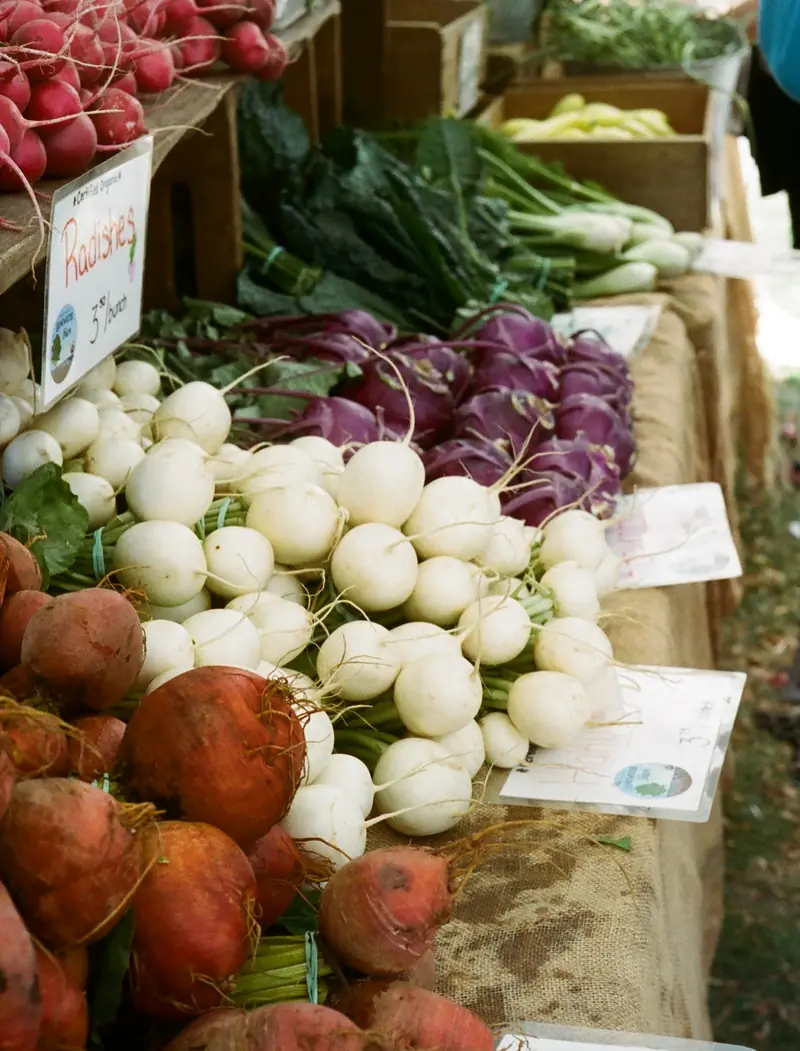
The daily requirement of essential trace elements and amino acids can be found in just 100 grams of this winter vegetable. Discover the unique varieties of radish and their culinary uses.
“The Wealth of the Common Man”
Radishes are a staple vegetable in our pantries, thanks to their resilience in growing and storage conditions. This humble root vegetable, which can be stored without loss from harvest to harvest, has long been the “king” of the winter table, earning the title of “vegetable of the common folk.” Despite its Asian and Mediterranean origins, this crop thrives in various climates and can be grown in any type of soil: it withstands drought, requires minimal fertilization, suppresses weeds, stimulates grapevine growth, and composts easily.
This affordable winter “superfood” is a treasure trove of fats, carbohydrates, sugars, fiber, enzymes, essential oils, and vital trace elements. It contains so much iron, phosphorus, potassium, calcium, magnesium, and sulfur that just 100 grams of the root provides the daily requirement for these nutrients. Additionally, 200 grams of this valuable vegetable supply the daily dose of vitamin C, along with vitamins A and B found in its thick root.

Benefits and Risks
Radishes have been used in folk medicine since ancient times. Their primary strength lies in boosting immunity. The juice of this root vegetable has antiseptic properties: when combined with honey, it effectively combats coughs and colds. Radishes are also recommended for treating kidney and gallbladder diseases, detoxifying the body, and preventing sclerosis.
In compresses, grated radish treats gout, rheumatism, sciatica, arthritis, and inflammation of joints and muscles. This vegetable is a dietary product for weight loss: despite stimulating appetite, this spicy root normalizes metabolism. Due to its high content of mustard oils, radishes should be consumed in moderation if you are prone to bloating, digestive issues, ulcers, or gastritis.
The black radish is considered the most beneficial, but it is also the most bitter. This drawback is absent in the milder, juicier, and tastier green radish (also known as margilan, Chinese, or lobo). In fact, the Chinese radish comes in several colorful varieties: besides green, it can be white, purple, or red. This root is dense in texture but not sharp in flavor. The large white daikon radish (also called Japanese radish) is considered a sweet radish due to the absence of specific mustard oils.
Delicious Recipes
Radishes can be served either cooked or raw. To avoid irritating the stomach, it’s better to consume radish dishes a little while after they are prepared. In soups, radishes add a zesty flavor (they pair well with melted cheese), while in salads, they are complemented by walnuts, fried onions, apples, carrots, lemon juice or vinegar, oil, or sour cream. In addition to the root, young shoots and radish seeds can also be used in salads.
Black Radish with Apple and Carrot
For one black radish, take one carrot and one apple, peel them, and grate them on a coarse grater. Chop some dill and combine all the salad ingredients. Add salt, pepper, a teaspoon of sugar, and 30 ml of oil. Mix and serve 10-20 minutes later.

“Korean” Radish
For six servings, take 1 kg of radish, 200 g of carrots, 2 onions, 4 cloves of garlic, 150 g of oil, and 1 teaspoon each of coriander, black and red pepper, along with 1-2 tablespoons of lemon juice, sesame seeds, sugar, and salt. Wash the vegetables, peel them, chop them, mix, add salt, and let them sit for half an hour. Sauté the onions over medium heat and let them cool. Mince the garlic. Season the salad with the sautéed onions and oil, garlic, pepper, coriander, sesame seeds, lemon juice, sugar, and salt.
Radish in Sour Cream
To soften the bitterness, a crunchy vitamin salad made with egg, black radish, and fresh cucumber is dressed with sour cream and walnuts. Instead of black radish, you can use a milder variety: green radish (lobo) or daikon. For two servings, take one radish, one cucumber, and one boiled egg. Layer the salad ingredients cut into strips: radish at the bottom, cucumber on top, followed by the egg. Cover the top layer with sour cream, season with pepper and salt. Chop a handful of walnuts into crumbs and sprinkle them over the sour cream.
Radish with Corn
Take one green radish, one egg, 150 g of canned corn, 70 g of mayonnaise, a couple of sprigs of fresh parsley, and 1 teaspoon each of salt and black pepper. Open the can of corn, drain the marinade, and mix the kernels with the chopped boiled egg and raw radish. Add mayonnaise, parsley, salt, and pepper. Mix and serve.
Daikon with Egg and Feta
Take 200 g each of daikon and white cabbage, 150 g of feta cheese, one boiled egg, and 2 tablespoons each of oil and chopped parsley. Grate the daikon and cabbage. Season with salt and pepper, mix, dress with oil, and add the grated feta and egg. Garnish the salad with herbs.
Radish in Pumpkin Soup
The flavor of this soup is unparalleled. Instead of the traditional potatoes and carrots, the recipe uses pumpkin and radish (125 g of each ingredient). Other components include onion, two processed cheese blocks, a turkey leg, 100 g of rice, 30 g of butter, and parsley. In a three-liter pot, pour in water, add the turkey leg, and cook the broth. After an hour, strain the broth and cook the rice in it. Sauté the vegetables in butter, add them to the broth with rice, and cook for another 5 minutes. Add pieces of boiled turkey and grated cheese to the soup. Cook until the cheese melts. Finally, add herbs, pepper, and salt. Before serving, you can sprinkle the soup with crushed croutons in individual bowls.

Enjoy your meal!
